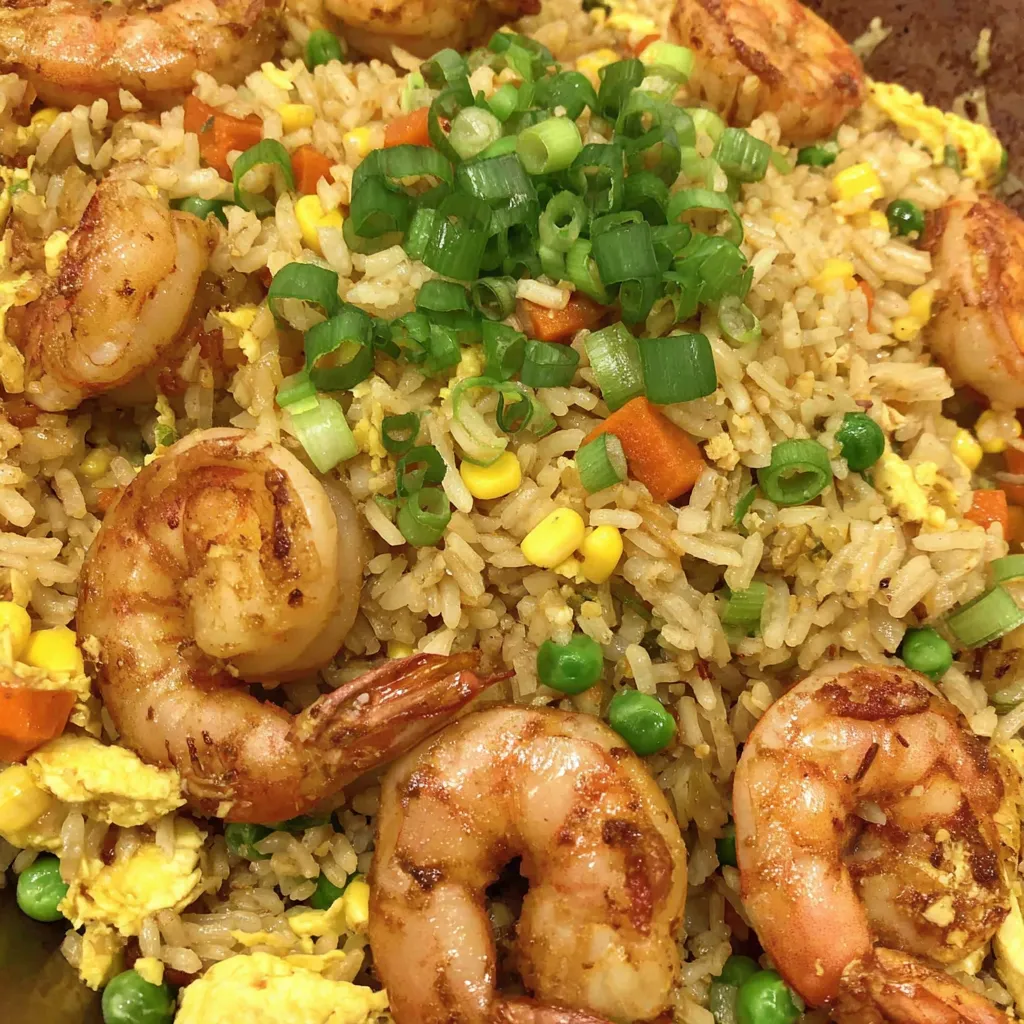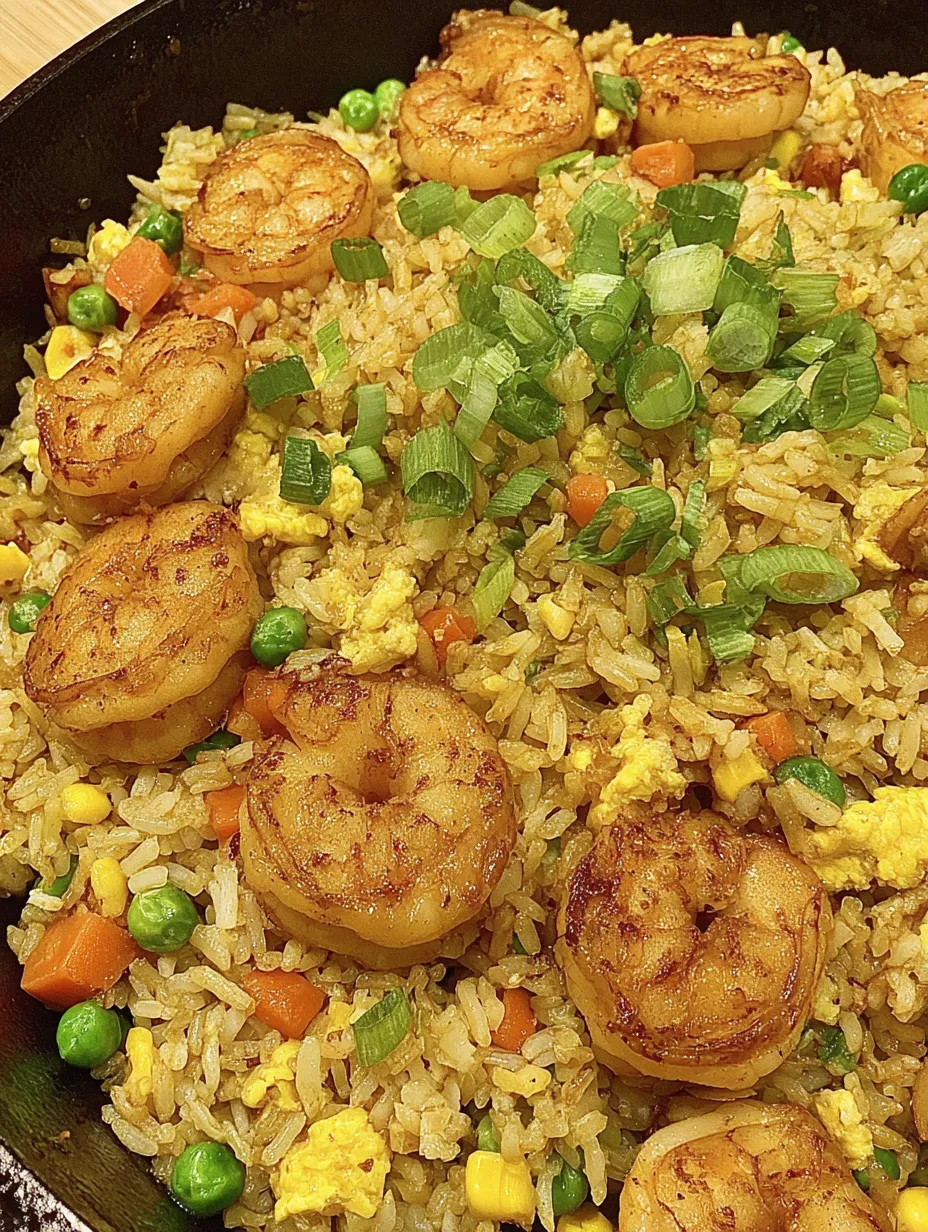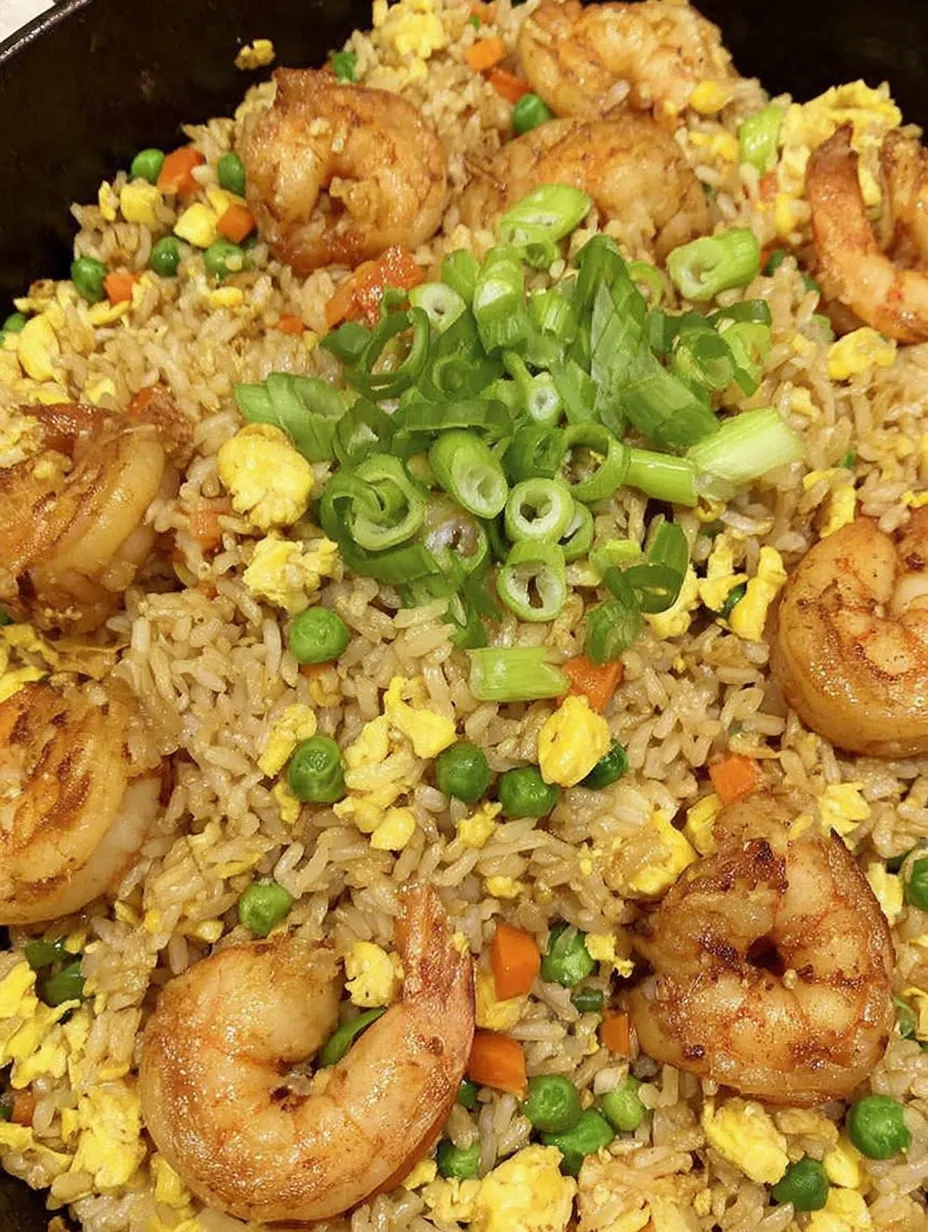 Pin it
Pin it
This shrimp fried rice saved my weeknight dinners when I was trying to figure out what to do with leftover rice that was taking up space in my fridge. I'd always ordered fried rice from Chinese restaurants but never thought about making it at home until my daughter suggested we try it ourselves. After some experimenting with ingredient timing and getting the rice texture right, we created this incredible one-pan meal that's become our go-to for using up leftovers and feeding everyone quickly. Now whenever we cook rice during the week, I make extra just so we can have this for dinner later.
My friend Sarah tried this recipe when her kids were complaining about "boring leftovers" and couldn't believe how fast they cleaned their plates. She said her eight-year-old actually asked for seconds, which never happens with homemade food that isn't pizza or chicken nuggets. Now she makes extra rice on purpose so she can make this during busy school weeks.
Getting Your Ingredients Right
- Day-old rice is crucial: Fresh rice gets all mushy and clumpy, while refrigerated rice has the right texture for frying
- Large shrimp cook better: Small shrimp overcook easily and get rubbery in the time it takes to cook everything else
- Frozen vegetables work fine: Peas and corn don't need thawing and won't add excess water to the dish
- Low-sodium soy sauce: Regular soy sauce can make everything too salty since you use quite a bit
- Real butter makes a difference: Creates better flavor and browning than oil alone
- Sesame oil for finishing: A little goes a long way and adds that authentic Asian flavor
 Pin it
Pin it
Making It Step by Step
- Getting the shrimp ready
- Season your shrimp lightly with salt and pepper while you heat grapeseed oil and two tablespoons of butter in a large skillet over medium-high heat. The butter adds richness and helps with browning.
- Cooking shrimp properly
- Add the seasoned shrimp to the hot skillet and cook for about three minutes, flipping them halfway through until they're pink and just cooked. Don't overcook or they get tough and rubbery. Remove them to a plate and set aside.
- Building flavor base
- Deglaze the pan with mirin to pick up all those tasty shrimp bits, then add the remaining four tablespoons of butter. Once melted, add diced onion and cook for two minutes until it starts getting soft.
- Adding vegetables
- Toss in the shredded carrots and cook for another three minutes until they're tender but still have some bite. You want them cooked but not mushy since they'll continue cooking with the rice.
- Scrambling eggs properly
- Turn the heat down to medium and push the vegetables to one side of the pan, creating a well in the center. Add sesame oil to that empty space, then pour in beaten eggs. Scramble them right there in the well, then start mixing them with the vegetables.
- Incorporating the rice
- Add your cold cooked rice to the pan, breaking up any clumps with your spoon. Season with salt, pepper, and lots of garlic powder - don't be shy with the garlic powder since it adds so much flavor.
- Creating proper fried rice
- Add soy sauce and oyster sauce, stirring everything together constantly until the rice turns that beautiful brown color. This takes a few minutes of continuous stirring to get the color and flavor distributed evenly.
- Final additions
- Stir in the frozen peas and corn, cooking just until they're warmed through. Add the cooked shrimp back to the pan and toss everything together gently so the shrimp don't break apart.
- Serving it right
- Garnish with chopped green onions and serve immediately while everything's hot and the flavors are bright.
I learned the hard way that using fresh, hot rice completely ruins the texture and creates this sticky mess instead of proper fried rice. I also used to overcook the shrimp initially, making them tough and chewy. Getting the timing right so everything stays tender took some practice.
Perfect Serving Ideas
This is basically a complete meal all by itself, so you don't really need anything else. Maybe some extra soy sauce or hot sauce on the side if people want to customize it. I usually just serve it straight from the skillet because it looks more casual and keeps everything hot longer.
Making It Different
You can switch up the protein and use chicken, pork, or even just vegetables for a lighter version. Sometimes I add different vegetables like bell peppers or snap peas depending on what I have around. A squeeze of lime juice at the end brightens everything up and adds a fresh note.
Storage and Reheating
This keeps really well in the fridge for several days and actually tastes great cold for lunch the next day. When reheating, add a splash of water or chicken broth to prevent it from drying out. The flavors get even better after sitting overnight.
 Pin it
Pin it
This shrimp fried rice has become our family's solution for those nights when everyone's hungry but nobody wants to wait for a complicated dinner. It uses up leftovers while creating something that feels special and tastes way better than takeout. My kids request this specifically now when they want "good Asian food," which makes me feel like I've actually mastered something useful in the kitchen.
Frequently Asked Questions
- → Can I use fresh rice instead of day-old?
- Day-old rice works best because it's drier and less sticky. If using fresh rice, spread it on a baking sheet to cool and dry out for 30 minutes first.
- → What size shrimp should I use?
- Large or jumbo shrimp work best - they won't overcook as easily and give you nice meaty bites. Aim for 16-20 count per pound.
- → Can I substitute the mirin?
- Yes! You can use dry white wine, rice vinegar, or even just skip it. Mirin adds a subtle sweetness but isn't essential.
- → How do I prevent the rice from getting mushy?
- Use day-old rice, keep the heat high, and don't over-stir. The rice should fry, not steam, so avoid adding too much liquid.
- → Can I add other vegetables?
- Absolutely! Bell peppers, snap peas, mushrooms, or bean sprouts all work great. Just add them with the onions and carrots.
- → How do I store leftovers?
- Store in the fridge for up to 3 days. Reheat in a skillet over medium heat or in the microwave, adding a splash of water if needed.
